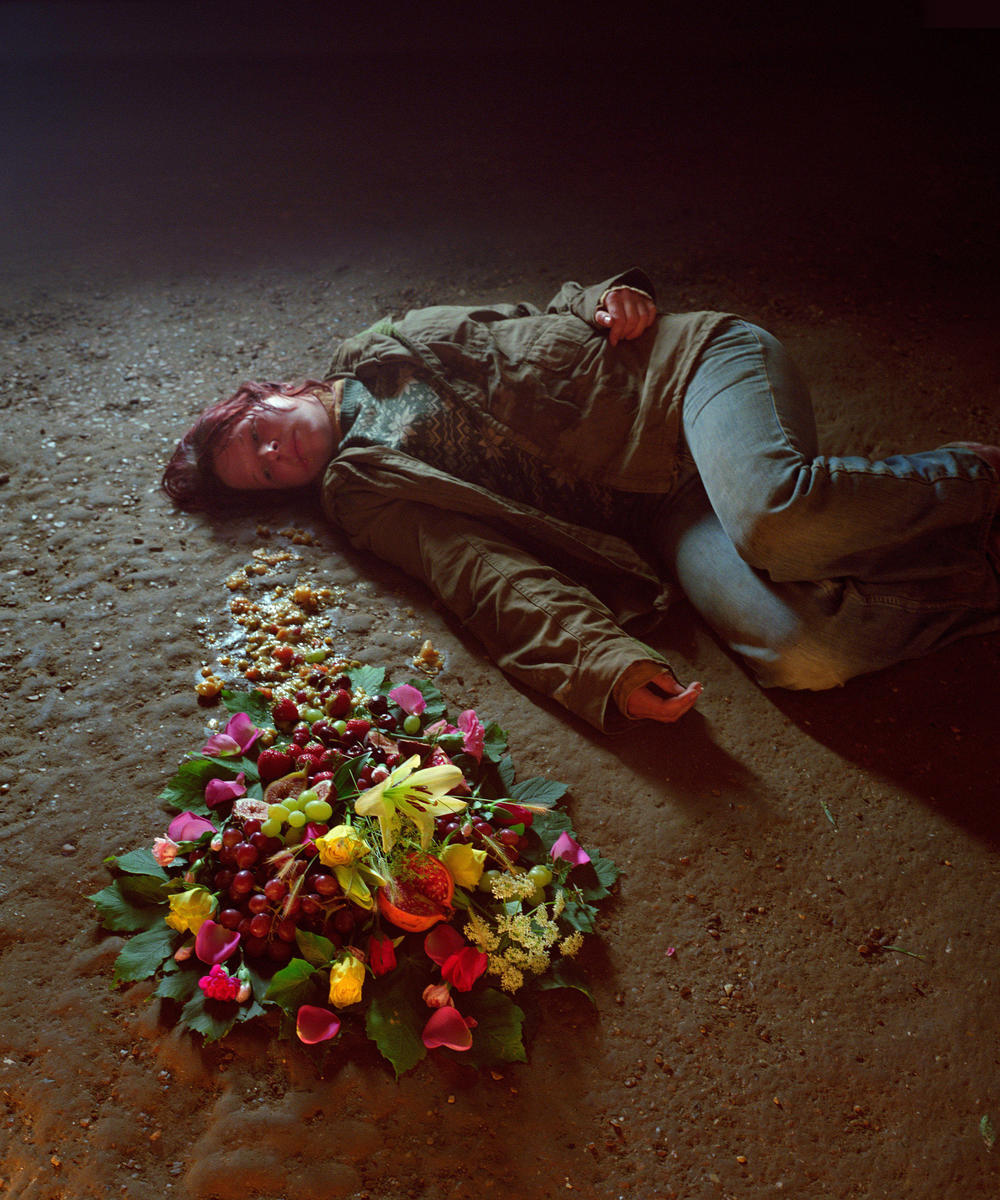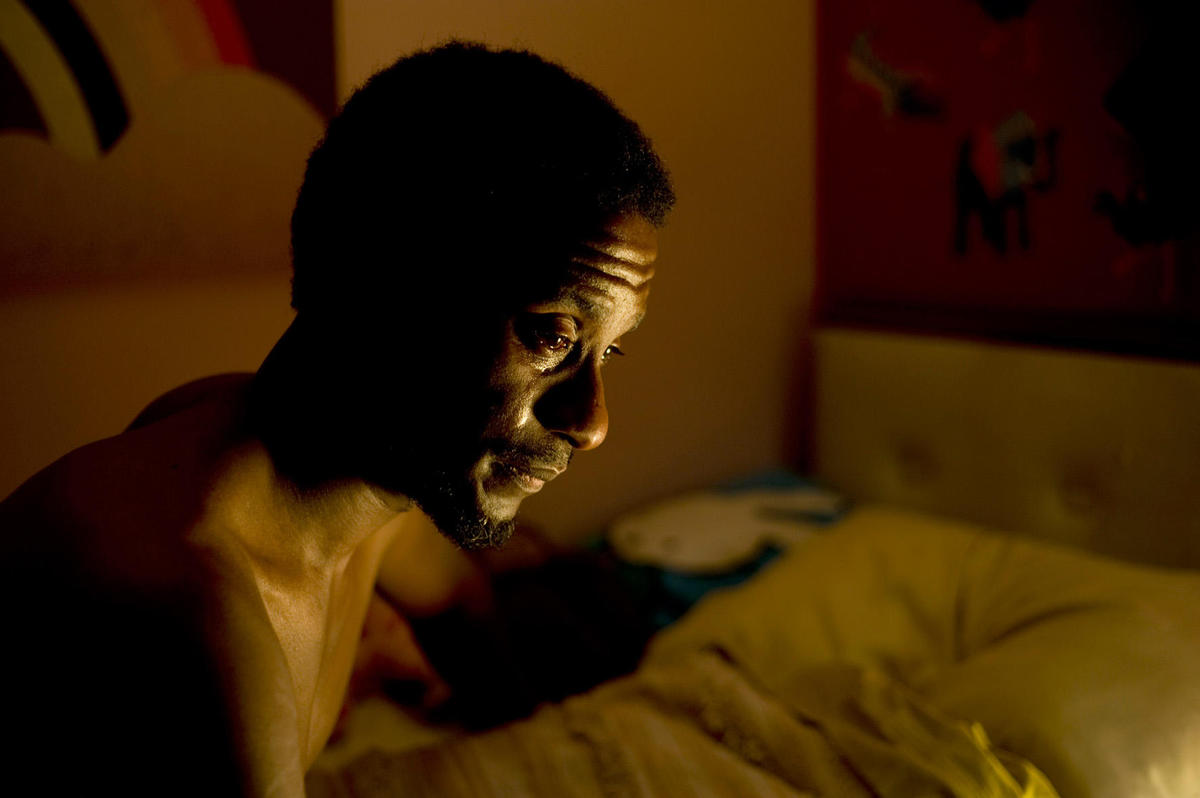
London
Omer Fast: Nostalgia
South London Gallery
October 7–December 6, 2009
In his video and film installations, Omer Fast plays with both voices and the stories they tell to create disjointed, destabilizing narratives. Looking Pretty for God (After GW) (2008) pasted the thick brogue of a New York undertaker, talking about his business, onto the synching lips of a cherubic kid. In The Casting (2008), an American serviceman’s memories from Iraq and Germany were cut together and narrated by a sweetly confused, thick-necked actor.
Nostalgia III, the centerpiece of Fast’s recent three-part installation at the South London Gallery, took the story of a West African refugee as source material for a film in which roles were reversed. The asylum seeker in the film was a white Englishman and the hostile, wealthy country to which he’d fled, through a system of underground tunnels and across the Mediterranean, was in Africa.
This made for some bitterly funny moments, as when the official who offered the Englishman amnesty and a place as “the first naturalized European,” should he reveal the location of the tunnel from which he emerged, told him, “We’d love to take you all in, as many as possible. But the tragic fact is, we can’t afford it.” Or when the same official reminisced about her time doing volunteer work in England, teaching “irrigation techniques, sustainable hunting, and farming,” explaining that the English are an ancient culture and — ha! — good dancers. The film could serve as a nice thought-piece to be shown to UK Home Office officials, who are infamously deficient in their understanding of the gravity of refugee situations. (To be fair, these officials are essentially pawns in a political battle to win the approval of anti-immigrant, xenophobic Middle England.)
Fast’s conjuring of a dystopian past (the film is set in the 1980s) was less effective where the film lost its tight relationship to the present. For one, Europe does take in (some) asylum seekers. And of the England fled by the refugees, Fast provided only a vague sense of its descent into anarchy, so that it remained a blank terrain unhampered by the complex web of politics, trade, and profiteers that usually thickens such situations. Indeed, the entire set-up, in as much as it tried to channel contemporary politics, was a bit unrealistic.

Fast nodded to this with two surreal moments: in the first, a naked man seated on a chair in an abandoned London underground station watched a projected film of a giraffe being shot in the bush; it leapt first gracefully, then ever more grotesquely, as blood spurted from its chest, the image filling the screen. In the second, a girl vomited, having been caught and savaged by police dogs as she attempted to make her way through the underground tunnel. As the camera panned over the mess, it turned into a still life of bright and shiny flowers and fruit.
While those moments did move viewers — conveying a certain pointed and even poignant queasiness — the film as a whole didn’t cohere. There was too much information packed into its thirty-one minutes, but not enough narrative substance for it to expand to a full-blown feature. Fast tried to get around this problem by using the linking device of a “twitch-up snare trap” for catching animals, as described by the West African refugee.
By the time we got to Nostalgia III, we were pretty familiar with this trap; the installation’s opening gambit was a five-minute video demonstration of one being built in a sunny glade by a hefty white guy dressed in camouflage gear (Nostalgia I). This was accompanied by a disjointed narrative, in which the speaker looked back on the time when he learned how to make the trap, to catch a partridge, as part of an army training camp in the forest.
A dark corridor led to the second video, a two-screen installation showing the storyteller on one side and an interviewer on the other (Nostalgia II). The storyteller was a West African refugee named William, the interviewer a rather unsympathetic character (an unshaven, greasy-haired prototype of the artist?) looking for the selling point in the refugee’s story to use in his film.
As William, increasingly desperately, described the partridge trap, he slipped, describing instead what would happen to a monkey who put his hand in the trap. The interviewer stopped him — “Why would you want to catch a monkey?”— and there followed an awkward moment in which William started to explain that monkeys can be eaten, too, before backtracking as he sensed the interviewer’s unease with that idea. (You could say William nearly got caught in a trap of his own making.)
The interviewer challenged the story at a number of points in the ten-minute video. Not quite understood, not quite trusted, not quite making sense, William’s attempts to perfectly provide the linear narrative expected by the interviewer — and his inability to do so — echoed the contortions that refugees must undertake as they fit their stories into a testimony that will grant them refugee status.
Nostalgia II was the strongest part of the show, perhaps because Fast is most at ease as an artist inserting a layer of uncertainty into the stories people tell. When he ventures into filmmaking proper, this uncertainty means his work lacks the narrative power to pull through, and the result ends up looking flimsy. (See also Take a Deep Breath, 2008.) Fast is onto a good thing when he demonstrates that real life doesn’t all tie up so neatly; but perhaps he should stick with video installations.